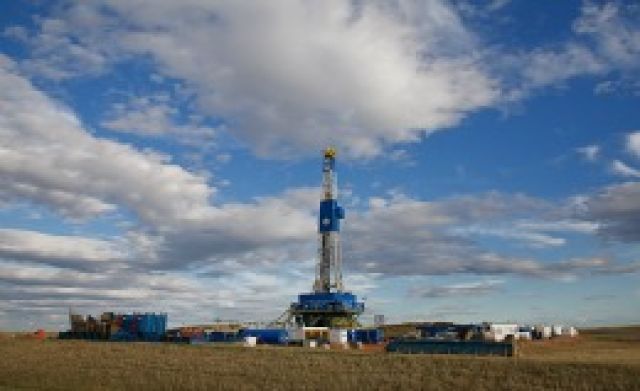
It has been known for some time that many of the prolific plays throughout the U.S. are in need of immediate infrastructure attention, especially in the bountiful Bakken, where a surge in production has caused more than its fair share of challenges.
ONEOK, the largest publicly traded master limited partnership, is one of the most active participants in the Bakken shale and, at September’s Barclays CEO Energy/Power Conference in New York City, its president, Terry Spencer, addressed the company’s present and future infrastructure plans for the booming play.
“We are active in a number of prolific shale plays across the U.S. and in particular the Bakken shale in the Williston Basin,” Spencer said. “It has provided us [ONEOK] with a number of opportunities to develop both natural gas and NGL-related infrastructure, as well as crude oil.”
After its 2005 acquisition of Koch Industries’ natural gas businesses, ONEOK now owns one of the largest natural gas liquids (NGL) systems in the country that, according to Spencer, continues to grow. In addition, much of that growth, he noted, is due to ONEOK’s presence in the Bakken.
“When we talk about growth at ONEOK Partners we’ve got to highlight development that’s occurring in the Bakken shale,” Spencer said. “When our projects that we’ve announced in the Bakken are completed, we will have invested in our gathering and processing segment almost $1.5 billion…”
Spencer explained that this $1.5 billion investment is just a small portion of the $6 billion in investments ONEOK has planned through 2015, which does not include another $2 billion in unannounced projects that, he noted, will become known once project details and commitments are complete.
According to Spencer, who has been at the helm of the partnership since 2009, part of that $1.5 billion investment will be used to construct four new natural gas processing plants that will have a capacity of 100 million cubic feet (MMcf) per day. All of the four announced plant projects will be strategically located in or around the Bakken in North Dakota.
“These projects together will increase our processing capacity in the Bakken shale to approximately 500 MMcf per day,” he said. “We’re also investing in new well connect, system expansions and upgrades to our gathering and compression assets, which are associated with getting supplies to those processing facilities.”
Within the Bakken, ONEOK is also planning “major NGL infrastructure investments.” Spencer said that the production from the planned processing plants will back those investments, which include a 500-mile NGL pipeline in the play. That pipeline, which is already under construction, is expected to be in-service in 2013 and brings a unique twist to the market.
“One of the key points that I’d like to make about the Bakken and the Bakken NGL pipeline is that it will, for the first time, allow processing plants in the Bakken or in the Williston Basin to recover and transport ethane, which is currently not possible,” he said.
ONEOK also has plans for the crude oil production, which – Spencer added – is expected to increase by 1 million barrels per day in the next five years. An already announced Bakken crude oil pipeline will span more than 1,300 miles and will bring light sweet crude to the Cushing hub.
“The unique thing about this particular pipeline is that it will focus on light sweet crude, which to many of those producers, is an advantage,” he said. “That way they can ensure when their barrels get to Cushing, they have the same light sweet barrel, which is very important to them.”
Outside of the Bakken, ONEOK has infrastructure plans for the bustling Midcontinent and Gulf Coast markets, which includes adjusting its Sterling distribution pipelines so they have the capability to transport NGL products, as well as improving on fractionation capacity with $1 billion investments in two new fractionators at Mont Belvieu.
As for the Bakken, “pipeline takeaway capacity is absolutely required for the area. We remain focused on creating value through our strategically located assets that connect supply with demand,” he said. “We demonstrate our ability to grow and have identified additional opportunities to continue that trend.”
Contact the author, Jennifer Postel, at jpostel@hartenergy.com
Recommended Reading
Enchanted Rock’s Microgrids Pull Double Duty with Both Backup, Grid Support
2025-02-21 - Enchanted Rock’s natural gas-fired generators can start up with just a few seconds of notice to easily provide support for a stressed ERCOT grid.
ADNOC Contracts Flowserve to Supply Tech for CCS, EOR Project
2025-01-14 - Abu Dhabi National Oil Co. has contracted Flowserve Corp. for the supply of dry gas seal systems for EOR and a carbon capture project at its Habshan facility in the Middle East.
McDermott Completes Project for Shell Offshore in Gulf of Mexico
2025-03-05 - McDermott installed about 40 miles of pipelines and connections to Shell’s Whale platform.
US Drillers Cut Oil, Gas Rigs for First Time in Three Weeks
2025-03-28 - The oil and gas rig count fell by one to 592 in the week to March 28.
E&Ps Pivot from the Pricey Permian
2025-02-01 - SM Energy, Ovintiv and Devon Energy were rumored to be hunting for Permian M&A—but they ultimately inked deals in cheaper basins. Experts say it’s a trend to watch as producers shrug off high Permian prices for runway in the Williston, Eagle Ford, the Uinta and the Montney.
Comments
Add new comment
This conversation is moderated according to Hart Energy community rules. Please read the rules before joining the discussion. If you’re experiencing any technical problems, please contact our customer care team.




